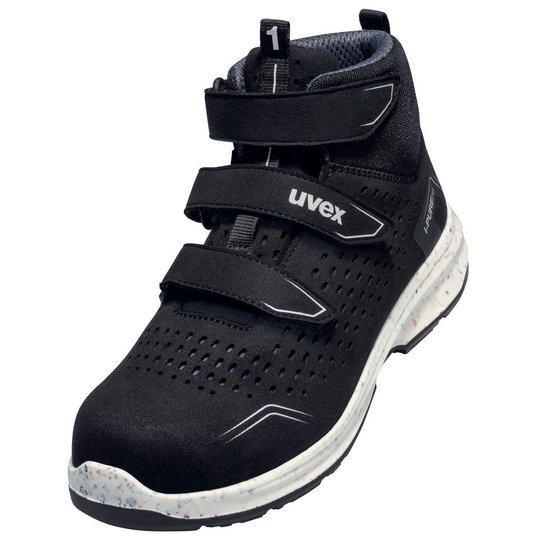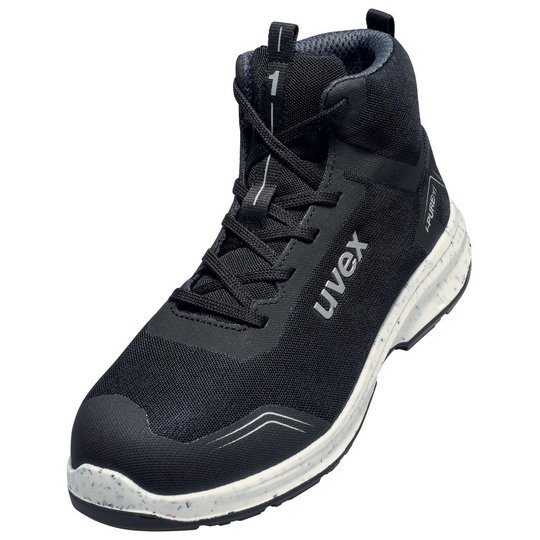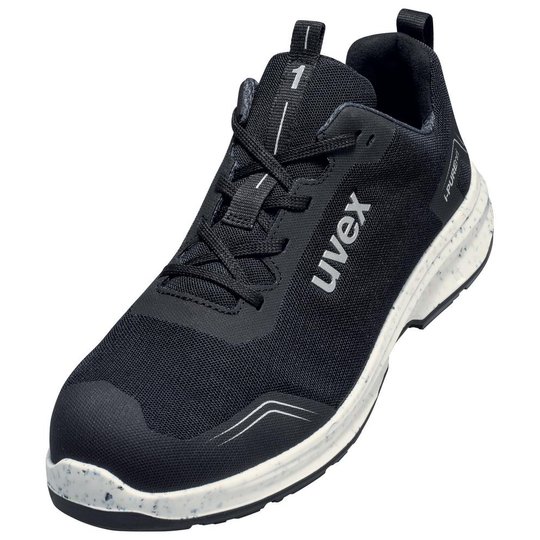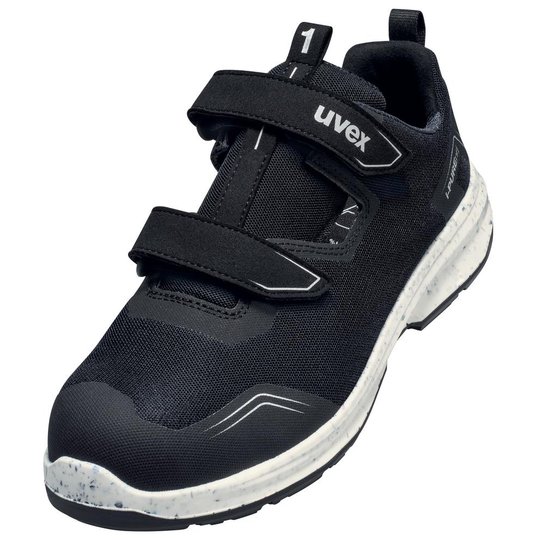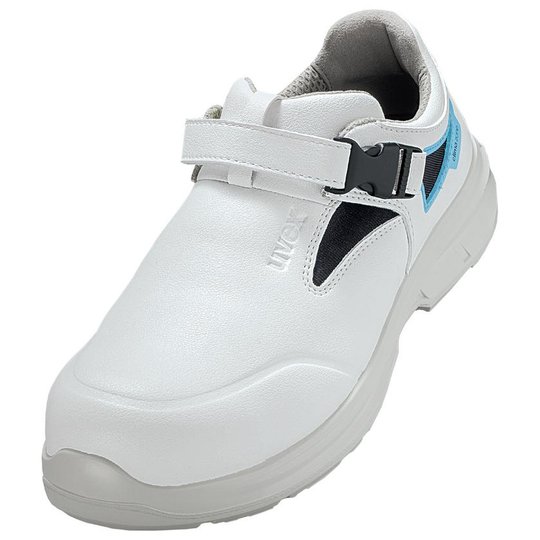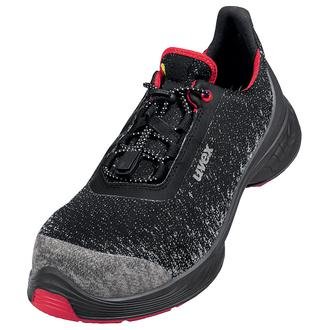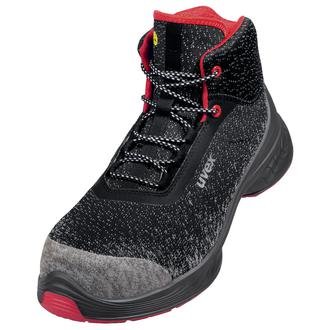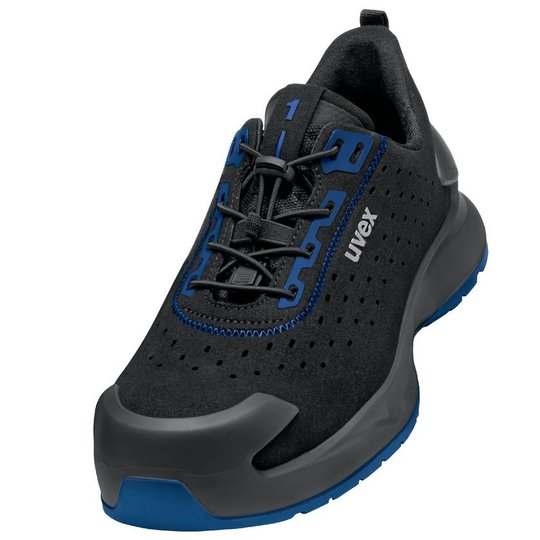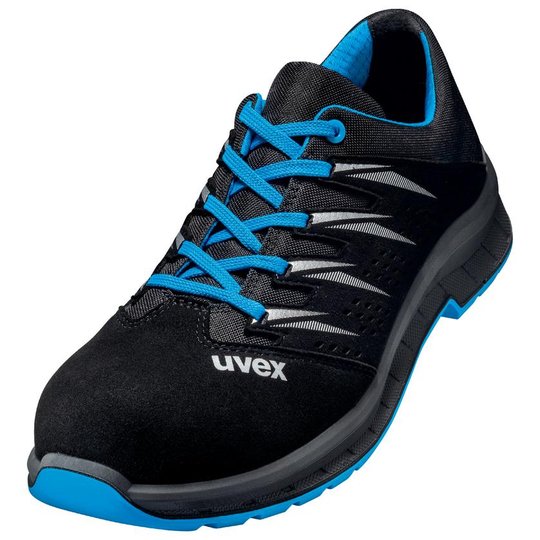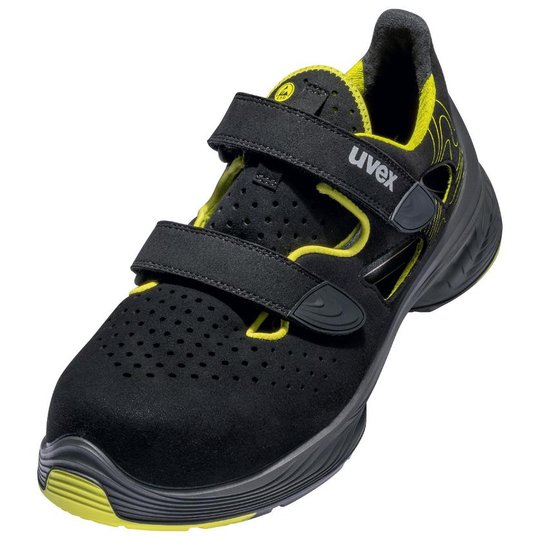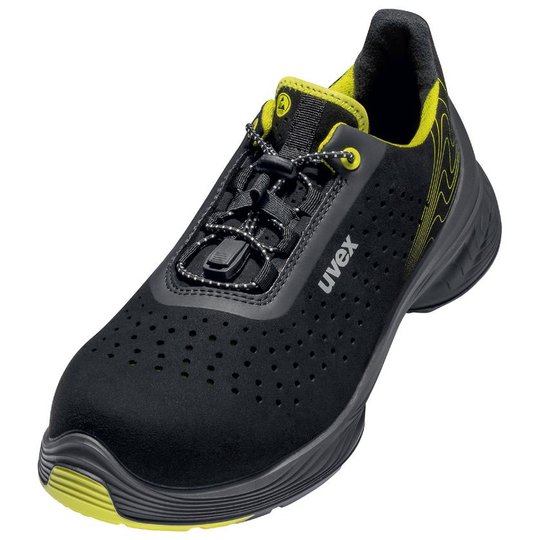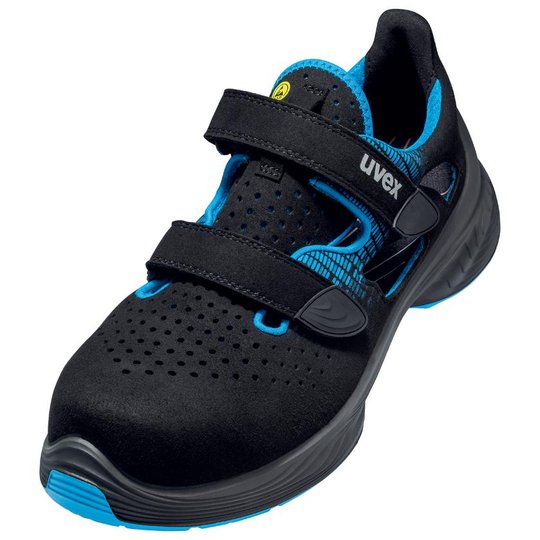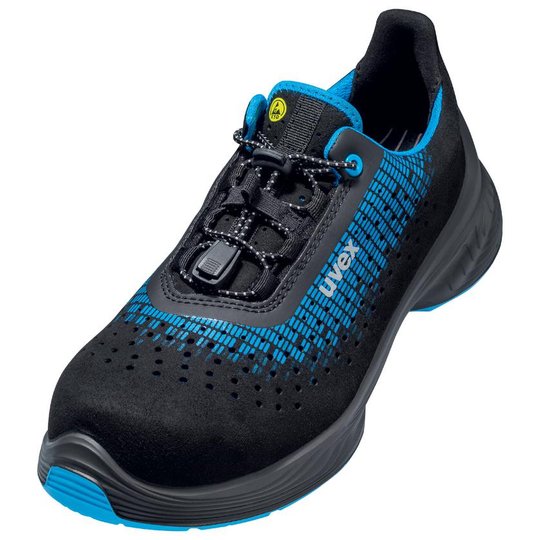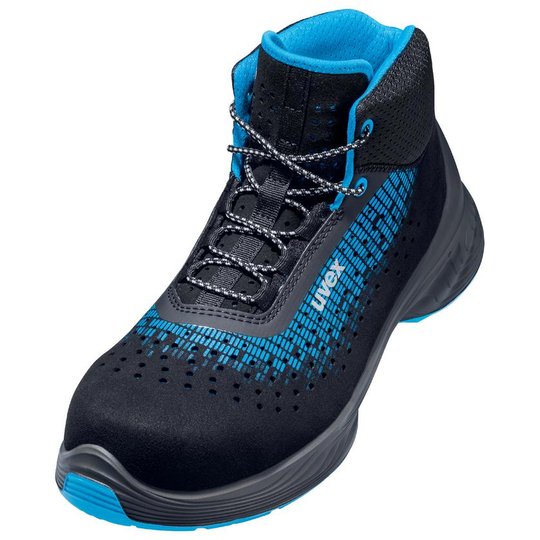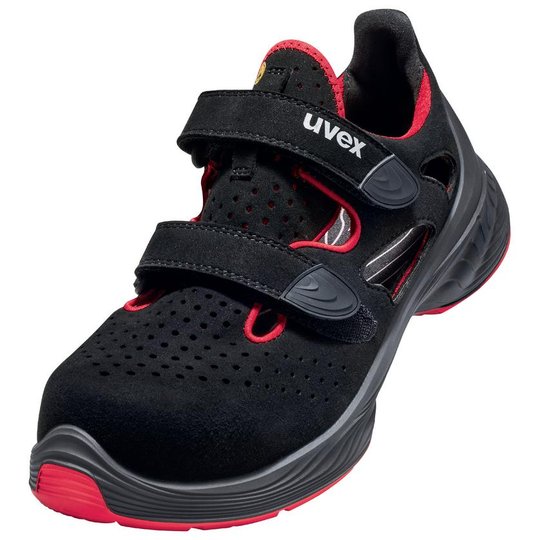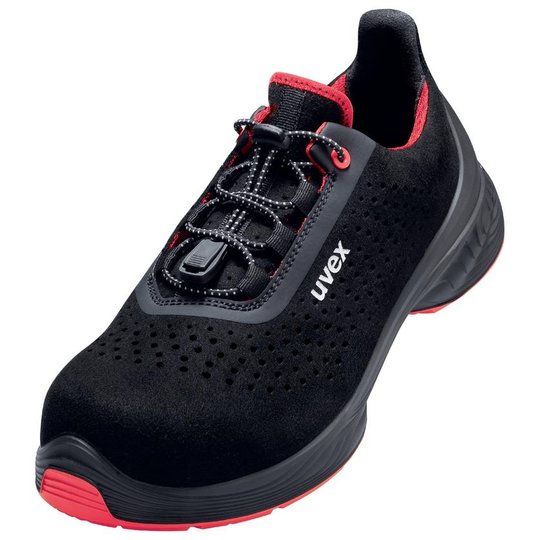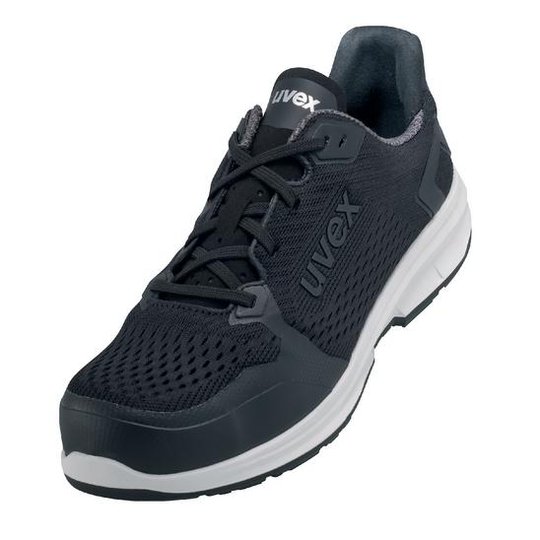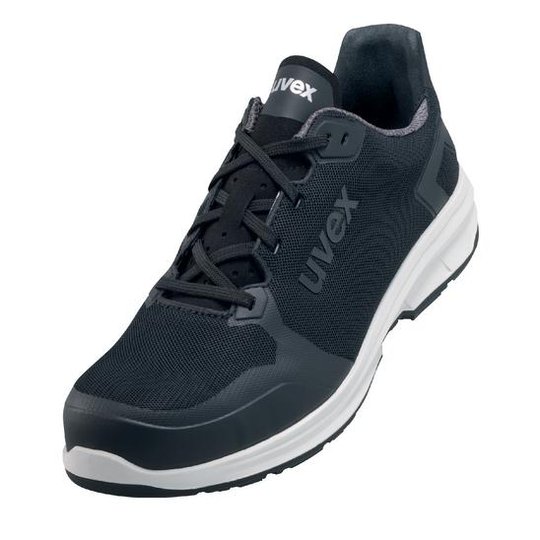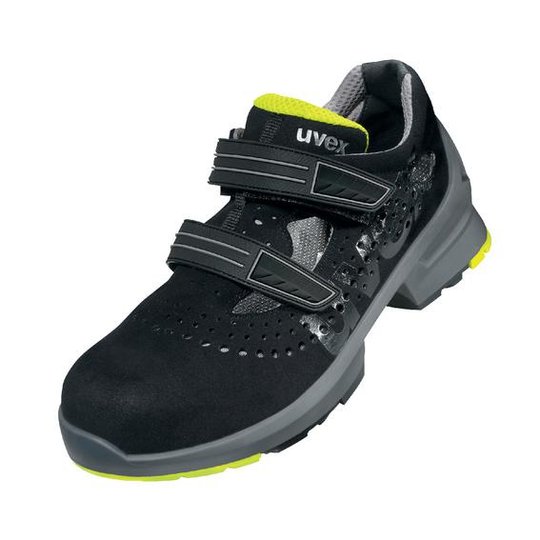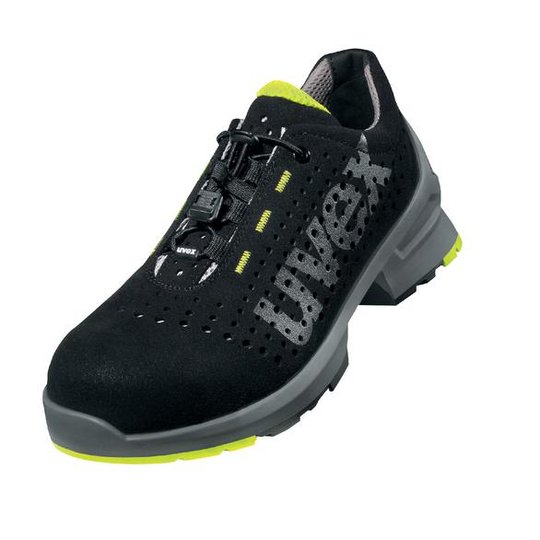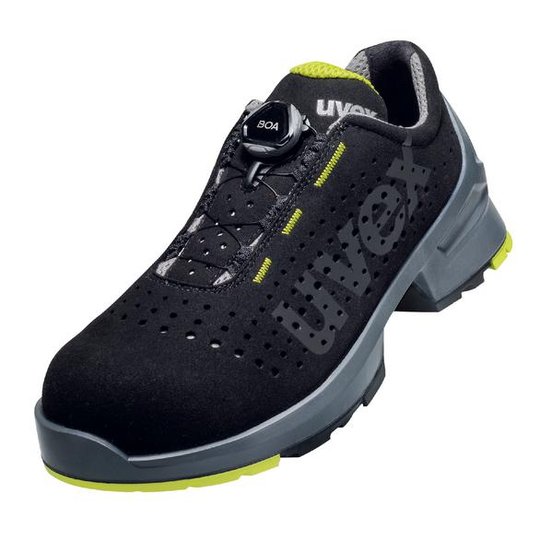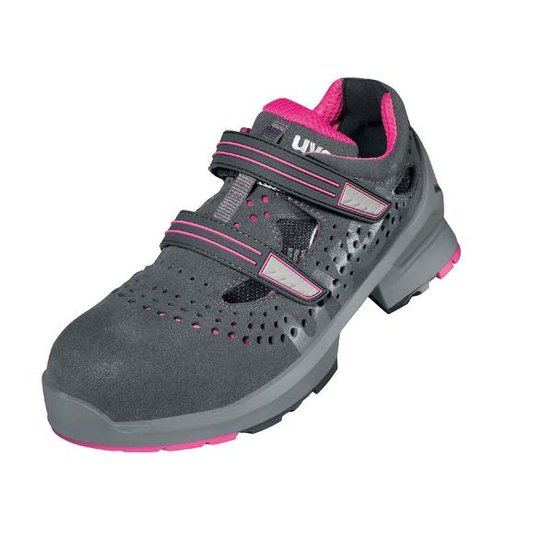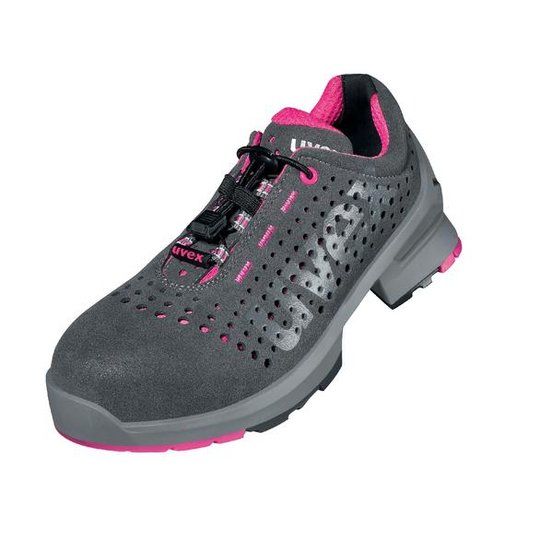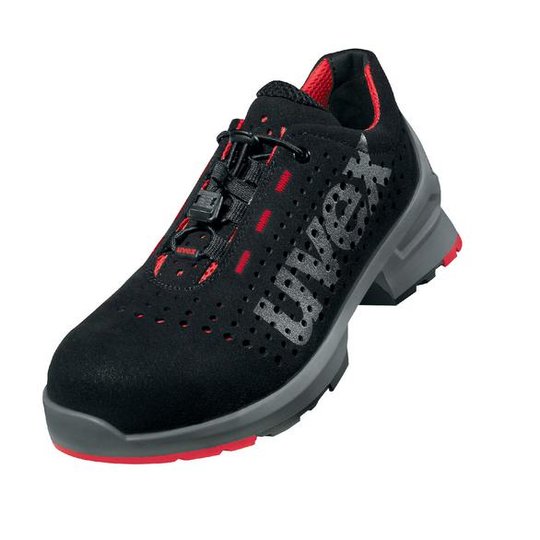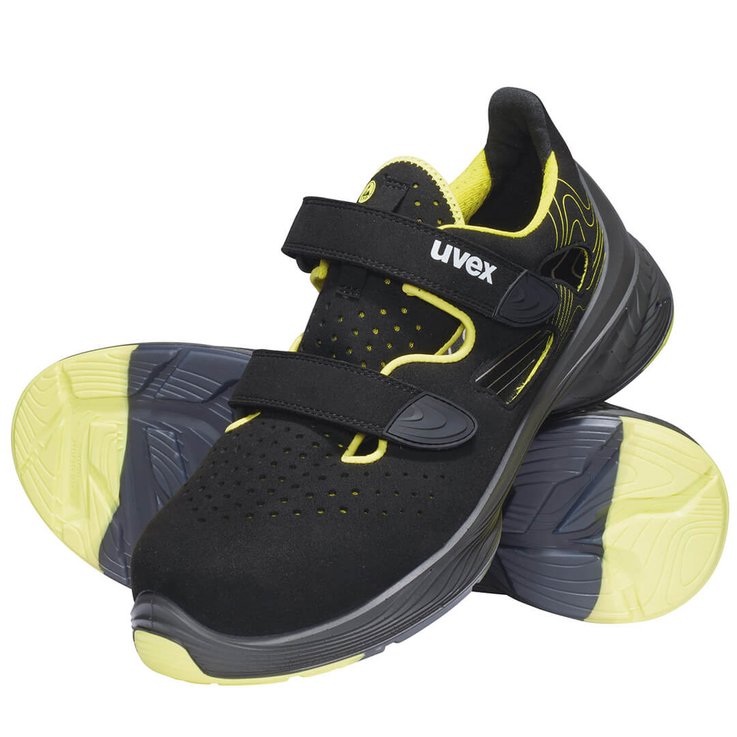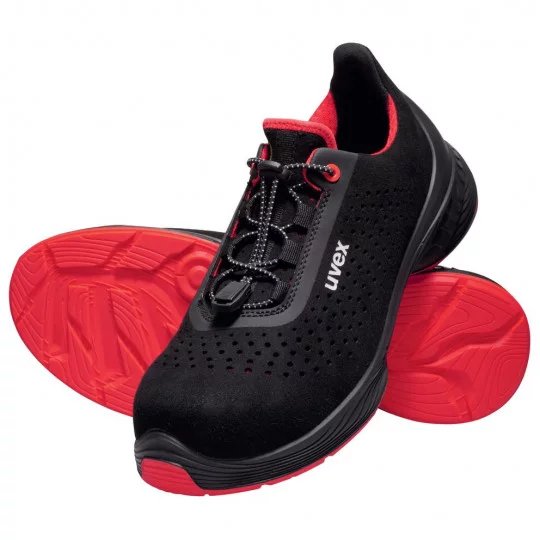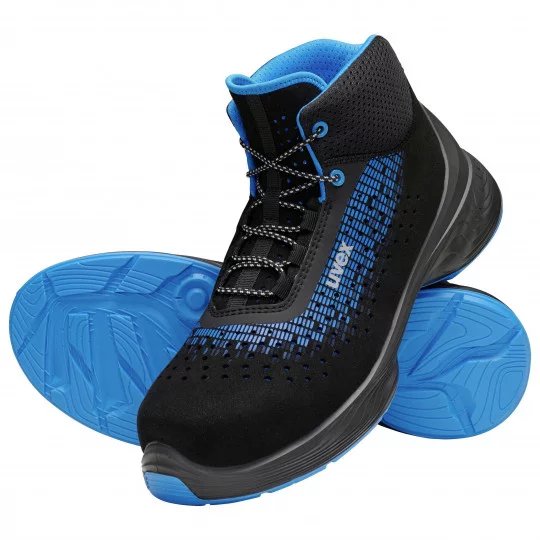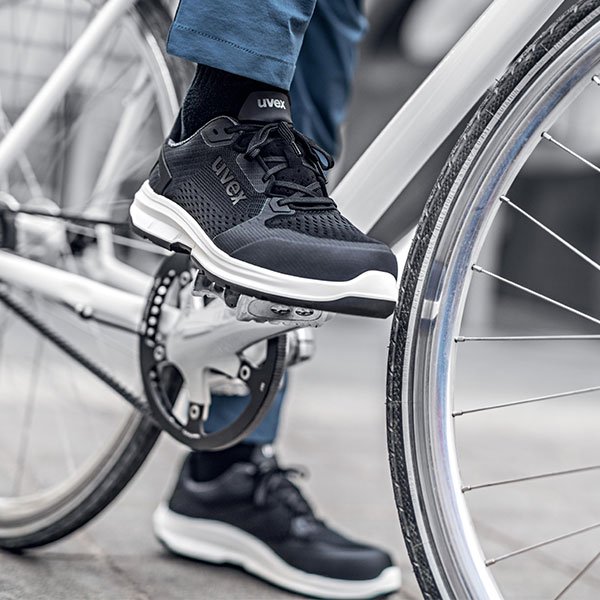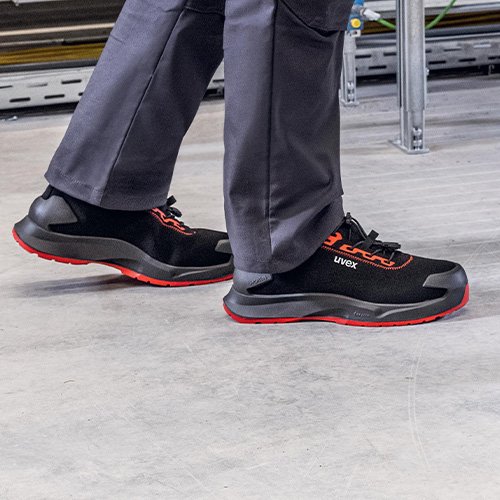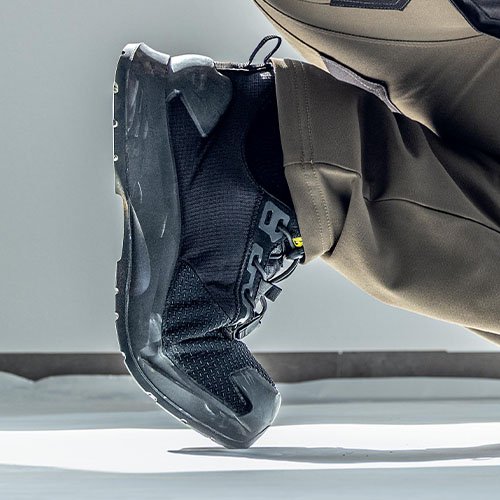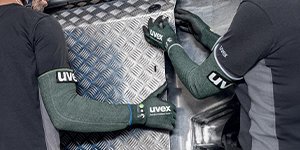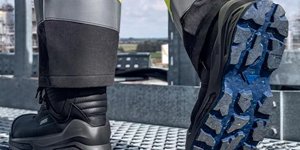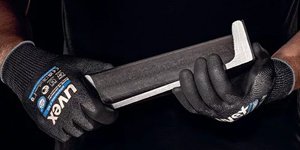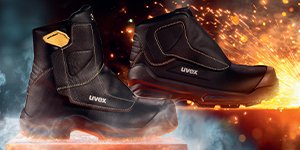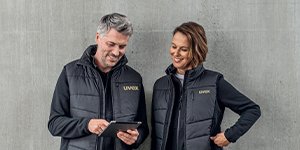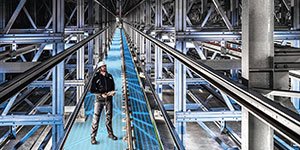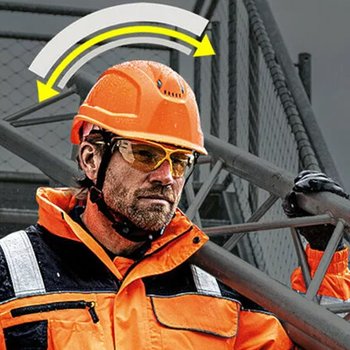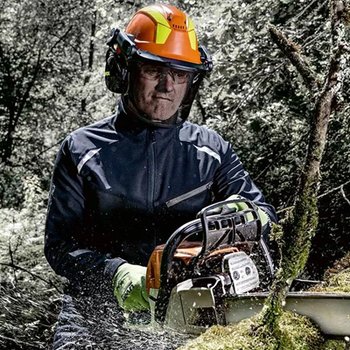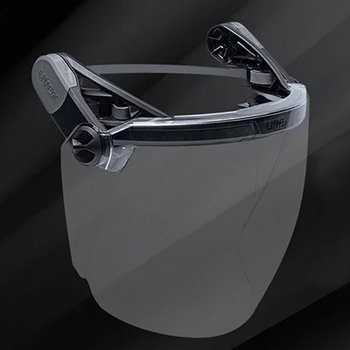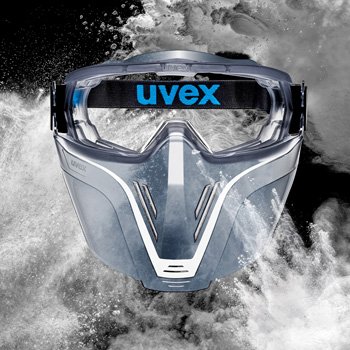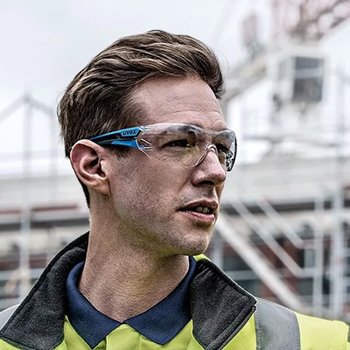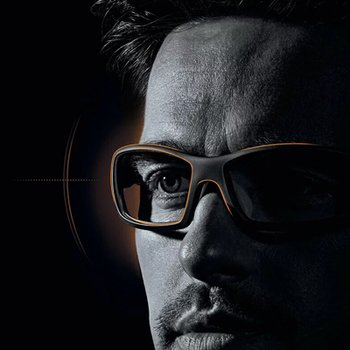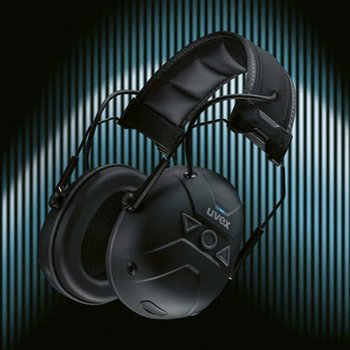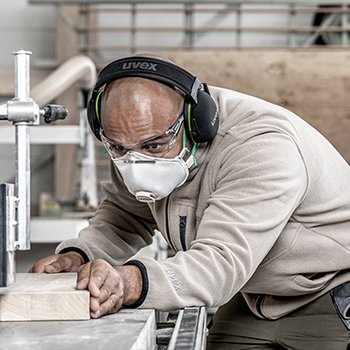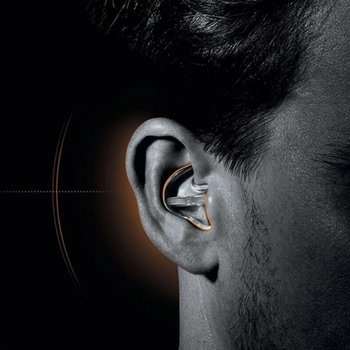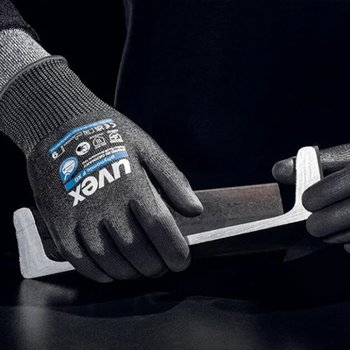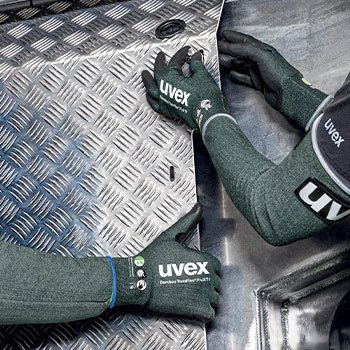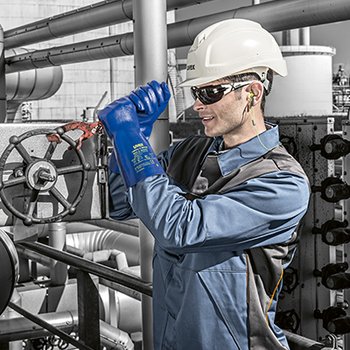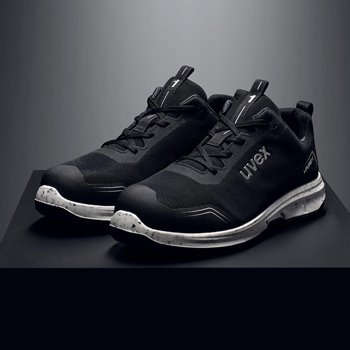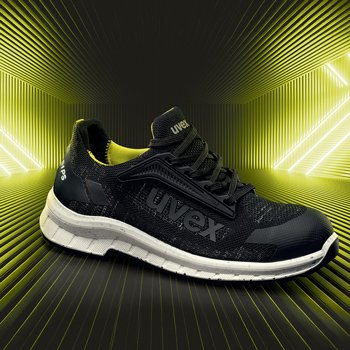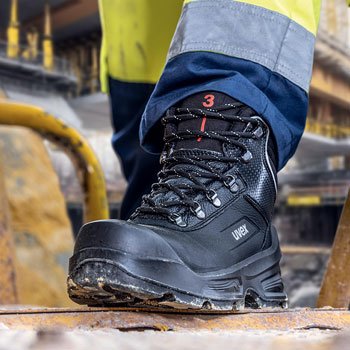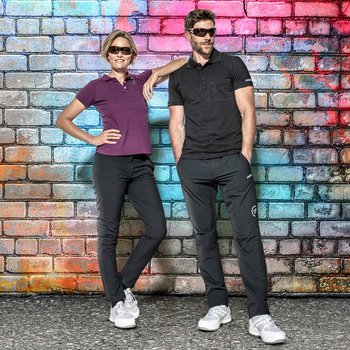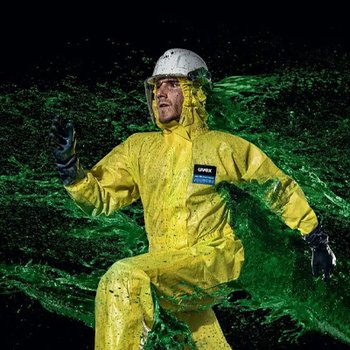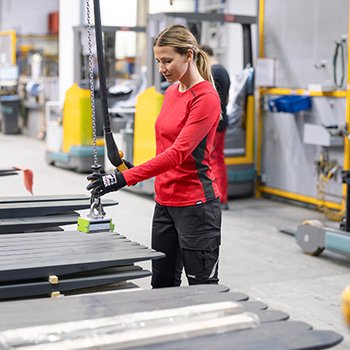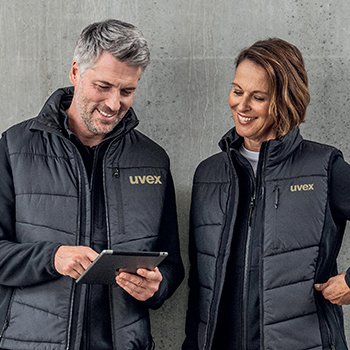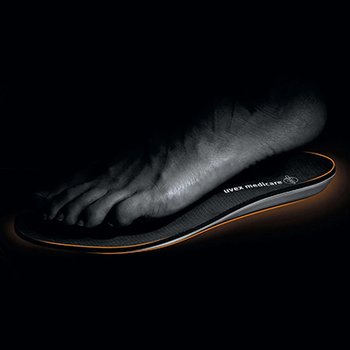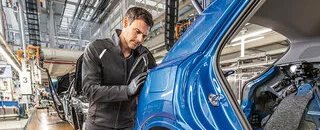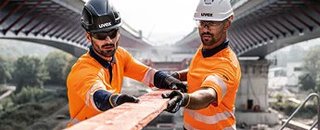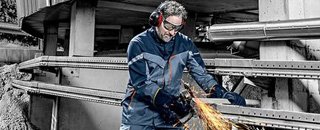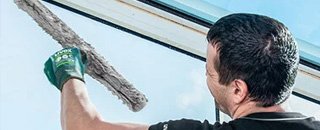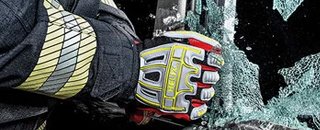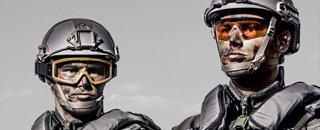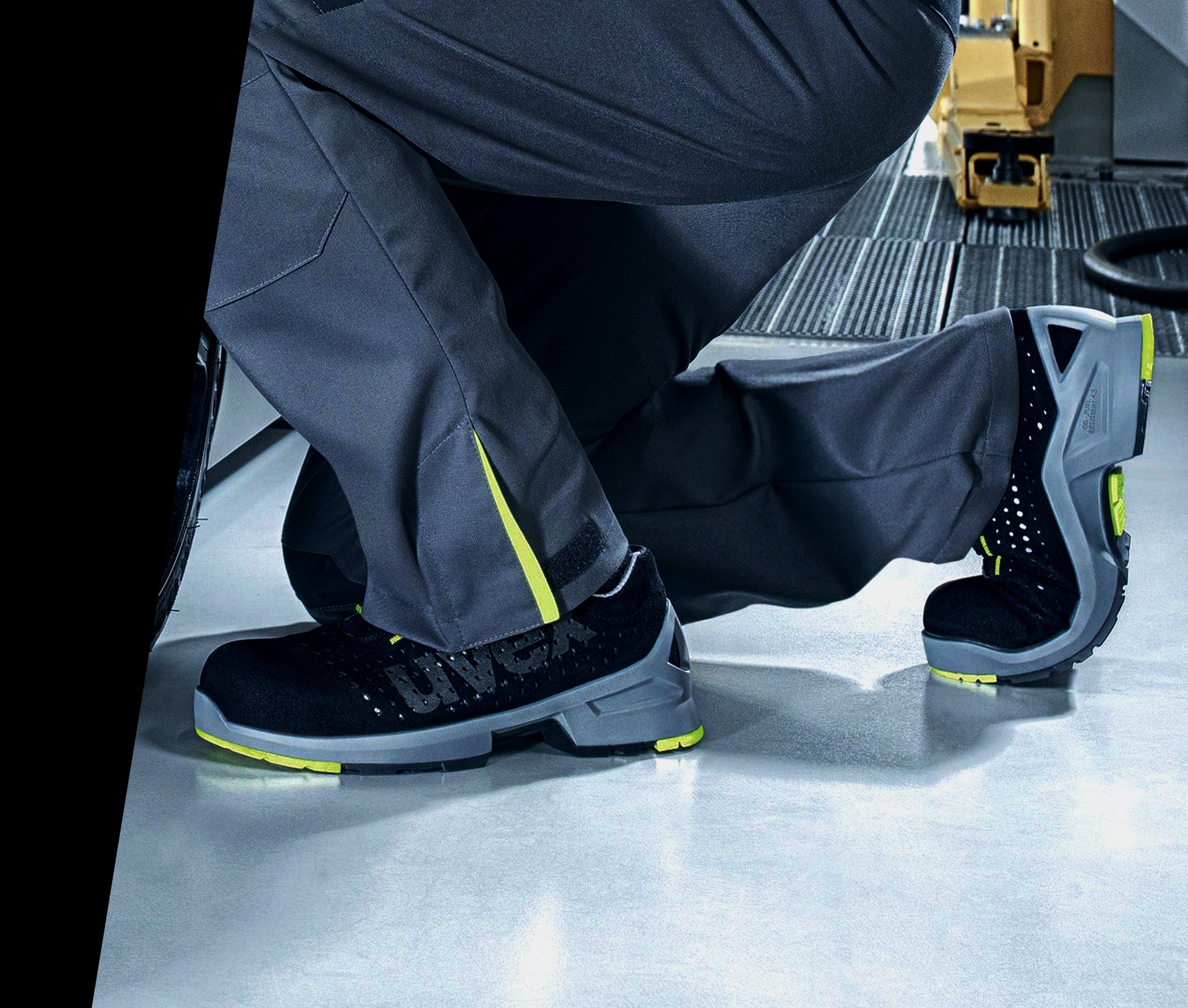
S1 safety shoes from uvex – Reliable companions wherever you go
As part of the personal protective equipment serving occupational safety, safety shoes and occupational footwear are designed explicitly for use in the workplace. Their task is to protect feet and, in some cases, legs against injuries, to support the entire body ergonomically and, in doing so, to offer maximum comfort as well as perfect fit. When wearing times are long and when there are hazards in the workplace, safety shoes are indispensable.
FILTER
Which legal requirements must S1 safety shoes meet?
European standard DIN EN ISO 20345:2022 defines the basic and additional requirements that must be met by safety shoes in order to provide protection against falling objects, impacts, getting caught, pointed objects, extreme temperatures and other hazards in the workplace. Protection class SB meets the minimum requirements while protection classes S1 to S7 also meet additional requirements. Standard DIN EN ISO 20345:2022 defines the minimum requirements in the following areas (selection):
- Toe cap: Minimum length and resistance to pressure and impacts
- Shoe upper: Height
- Heel area
- Outer shoe material: Water vapour permeability and rate
- Outsole: Dimensions and abrasion resistance
Since the amendment dated June 2022, this standard has defined further, specific requirements of the protective properties of safety shoes or updates to the existing requirements. The standard now also includes safety shoes that have been orthopaedically adjusted to the wearer, sub-divided into three types. Two new safety classes (S6 and S7) as well as further additional requirements have been added. Read our blog article, Standard DIN EN ISO 20345: Amendments 2022 to find out about all the changes made in June 2022.
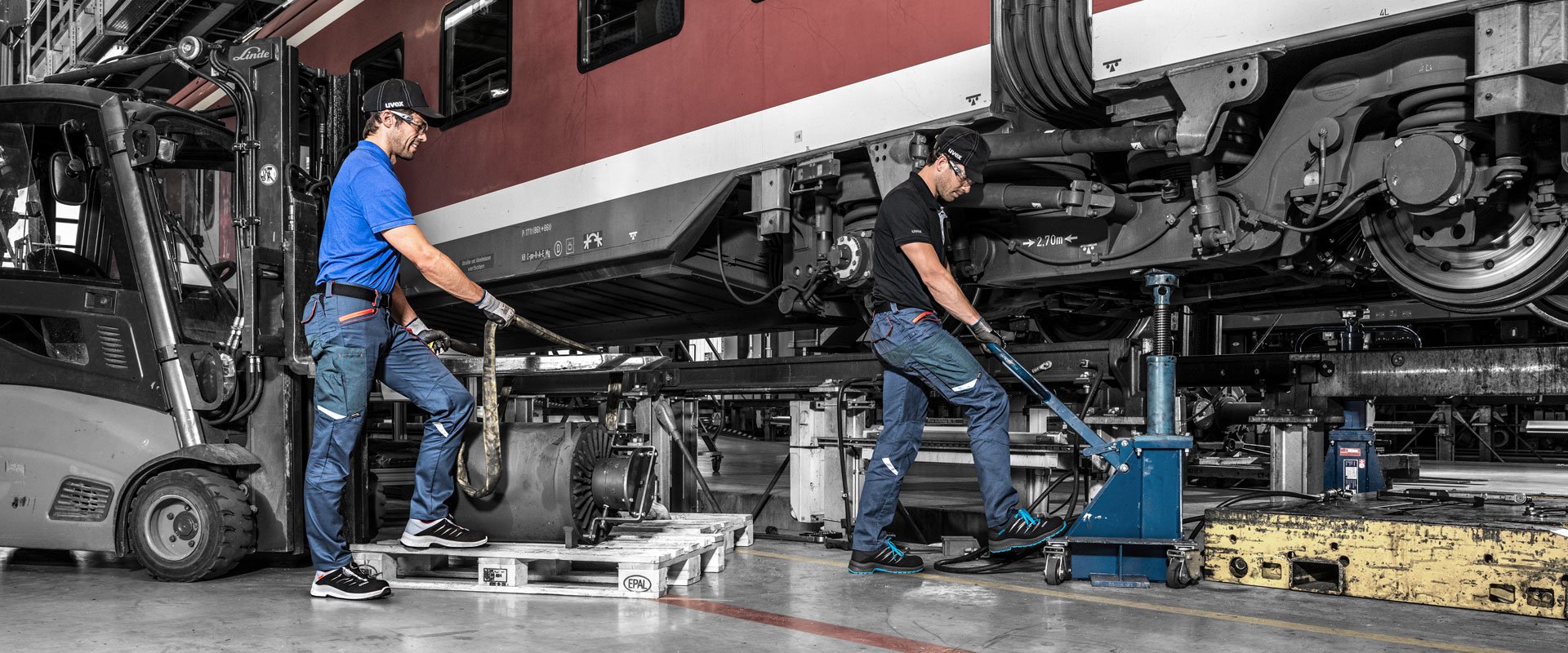
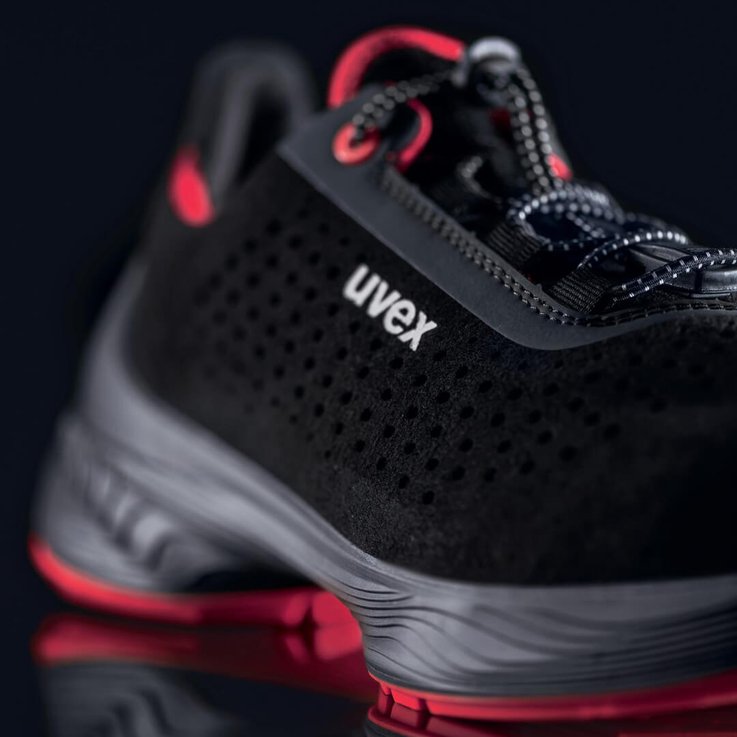
What distinguishes S1 safety shoes from S2 & S3?
All safety classes are based on the basic type (SB), which differs from an everyday shoe thanks to the protective toe cap and a range of other requirements. The cap can withstand impacts of up to 200 Joules. This corresponds to a weight of 20 kilogrammes falling onto the shoe from a height of one metre. Another test is a pressure test in which the toe cap must withstand 15 kilonewtons (a load of approx. 1.5 tonnes). The shoe must also meet further basic requirements, such as increased slip resistance. The following protection classes build on these basic requirements, with each class having its own special features:
A special feature of the S1 safety shoe is its anti-static effect, which prevents electrostatic charging of the user and guarantees electrostatic discharge. It protects the wearer against hazards that can occur in connection with electrostatic charge. It reduces the risk of electric shock from electrical equipment, for example, as well as the ignition of flammable substances or vapours due to flying sparks. Yet anti-static must not be confused with electrostatic discharge (ESD), which protects electronic components rather than the wearer. In our blog article, we explain the Difference between anti-static and ESD based on the example of safety shoes. Thanks to the penetration resistance provided by their metal inserts (S1 P) and non-metallic inserts (S1 PL/S1 PS), S1 P/PL/PS shoes protect the feet against pointed objects that could penetrate the sole of the shoe. S2 shoes also impede water penetration and absorption, and offer protection in particular in damp or wet terrain. S3 shoes combine all these advantages and also have a sole with a defined tread depth, which provides additional grip.
| SB | S1 | S1 P | S1 PL | S1 PS | S2 | S3 | S3L | S3S | |
| Basic requirements | X | X | X | X | X | X | X | X | X |
| Anti-static effect | X | X | X | X | X | X | X | X | |
| Energy absorption in the heel area | X | X | X | X | X | X | X | X | |
| Petrol-resistant & oil-resistant soles | X | X | X | X | X | X | X | X | |
| Resistant to water penetration and water absorption for a minimum of 60 minutes | X | X | X | X | |||||
| Penetration resistance, steel | X | X | |||||||
| Penetration resistance, textile, tested with a 4.5 mm test nail | X | X | |||||||
| Penetration resistance, textile, tested with a 3.0 mm test nail | X | X | |||||||
| Outsole with tread | X | X | X |
To find out more about the further protection classes, visit our respective category sites.
In which occupations should S1 safety shoes be worn?
S1 safety shoes are ideal for use in dry environments for skilled manual work, in industry and in logistics. S1 P/S1 PL/S1 PS shoes with penetration resistance also protect wearers in work areas where there is a risk of pointed or sharp objects penetrating the soles.

How are S1 safety shoes designed?
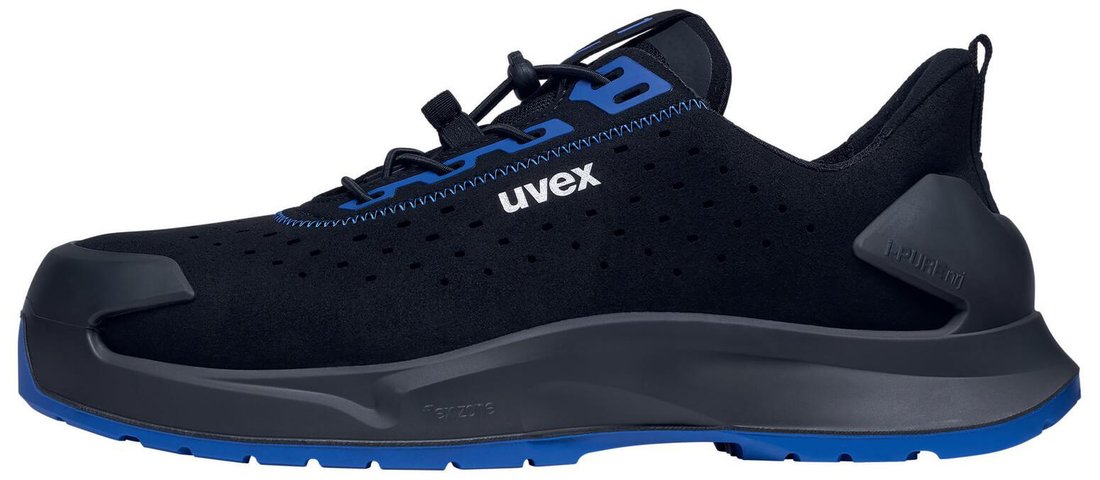
An S1 safety shoe meets fixed, defined, basic and additional requirements, some examples of which are provided in the following list:
The aluminium, plastic or steel caps protect the toes against falling objects (up to 200 Joules of energy) and static pressure (up to 15 kilonewtons).
The outer shoe of uvex safety shoes consists of high-quality outer shoe materials, such as leather, textiles or micro-velour. For optimal comfort, the outer shoe material should be breathable, hydrophobic (depending on the model), heat resistant, cleanable and, of course, robust.
The lining material comes into direct contact with the foot and can regulate moisture and temperature well. It is quick-drying, breathable, does not rub or chafe and is free from harmful substances. This creates a good climate in the shoe as well as a high level of comfort.
The heel cap provides support in the heel area and protects the wearer against twisted ankles.
The cushioning in the collar, on the tongue and on the upper distributes and reduces pressure points and increases wearer comfort. This is particularly important when the shoes are being worn for long periods of time.
S1 safety shoes from uvex can be adjusted to the foot either with a standard lace, an elasticated fast-lacing system or velcro fasteners.
The insole is responsible for shock absorption at the forefoot and heel, and can also support the arch. The insole is moisture-regulating, breathable, skin-tolerant and quick-drying.
The inner sole, made of fleece, textile or cellulose, absorbs moisture and influences the electrical volume resistance.
Different outsole materials offer different levels of resistance to environmental influences, such as heat, cold or chemicals. Therefore, when selecting S1 safety shoes, note whether the outsole is made of polyurethane, rubber or thermoplastic polyurethane.
This textile or steel insert provides S3/S3L/S3S and S1P/PL/PS safety shoes with penetration protection. It protects the wearer against pointed or sharp objects.
The upper cap protects the outer shoe material of the safety shoe in the toe cap area against wear and ensures longer durability of the shoes. The upper caps are usually made of polyurethane, TPU or textile.
For more information on the components and technologies of ergonomic safety shoes from uvex, see our blog and the article What’s behind a safety shoe?
uvex provides the following shoe models
in protection class S1:
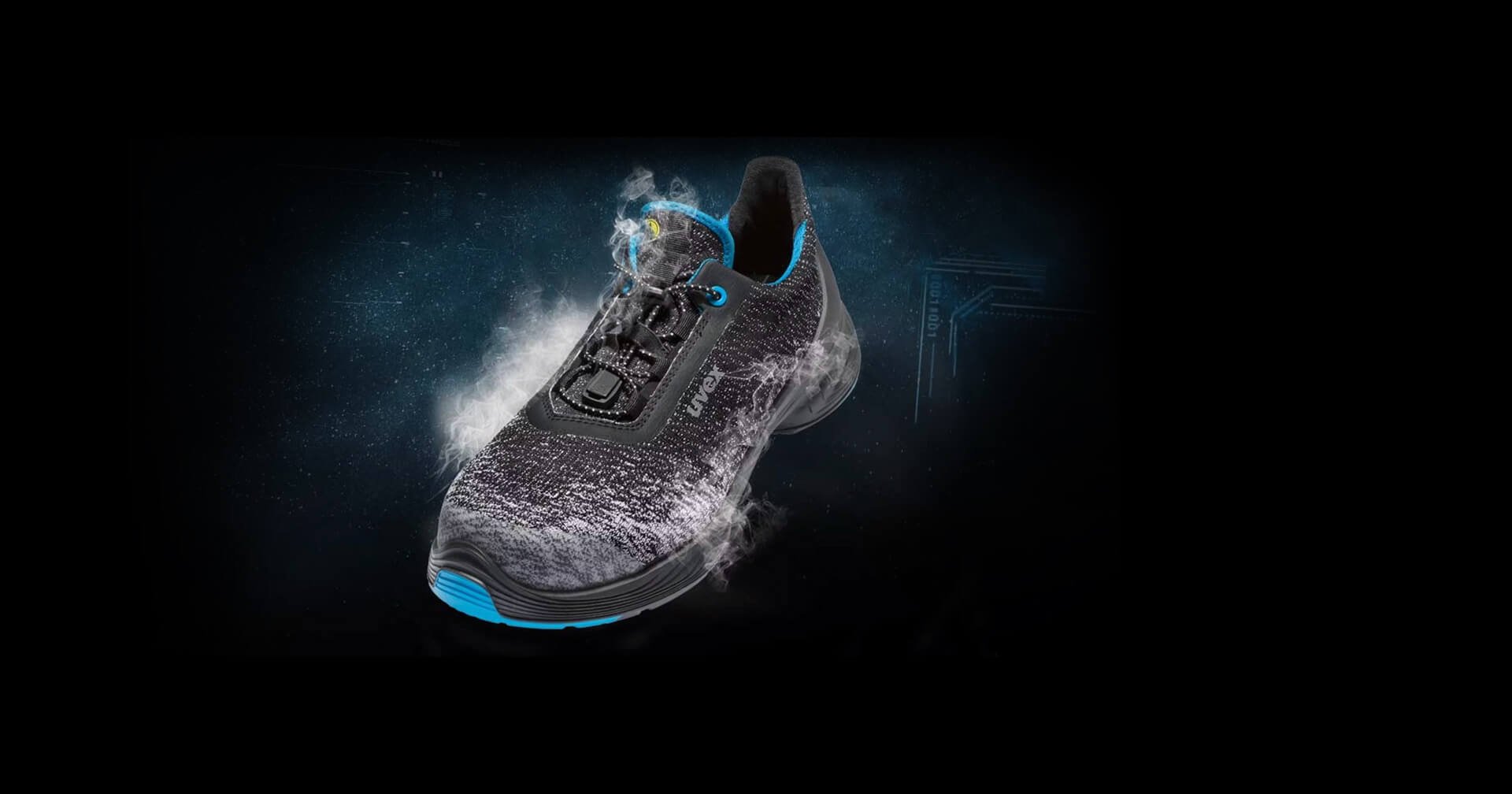
Can I wear orthopaedic inserts in S1 safety shoes?
For people who need orthopaedic inserts or other shoe adjustments, uvex medicare offers certified and legally compliant solutions. You can fit your safety shoes with a comfortable customised insert from uvex. If you have any questions, please do not hesitate to contact our orthopaedic expert advisers. You can reach them by telephone +49 (0)911 9736-1940 and by email medicare@uvex.de. PPE regulations and DGUV rule 112-191 stipulate that only certified orthopaedic solutions are permissible in safety shoes. Therefore, private inserts must not be worn!
Safely shod throughout the workday – thanks to uvex
Search our wide range for the right S1 safety shoes for your work situation and start your working day safely. If you have any questions about choosing the right shoes, please do not hesitate to contact our uvex expert advisers. You can reach them by telephone +49 (0)800 66 44 893, by email serviceteam@uvex.de or via the uvex contact form. For an overview of our entire safety shoe range, see the Safety Shoe category page.
